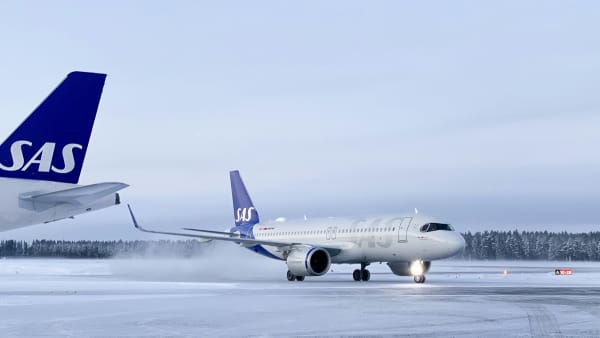Aviation in Remote Areas: Challenges and Opportunities
Aviation in remote areas is a subject both fascinating and complex. The unique challenges that pilots and aviation companies face while operating in these areas often requires specialized skills and innovative approaches. Simultaneously, it presents opportunities for the aviation industry and for the communities served by these flights.
Understanding Remote Area Aviation
In essence, remote area aviation refers to the operations of aircraft in areas far from urban centers, often characterized by severe weather, challenging terrain, and a lack of infrastructure. Think the barren Arctic, the vast outback of Australia, or the dense rainforests of South America. Flights in these regions can be for a variety of purposes — from essential mail and medical services to resource sector support and tourism.
Key Challenges in Remote Area Aviation
Operational, logistical, and safety challenges abound in remote aviation. Here are some critical ones:
Severe Weather Conditions: Remote areas often present extreme weather conditions, making flying challenging and dangerous. Intense cold, heavy rain, strong winds, or dense fog can significantly affect the operation of aircraft.
Difficult Landing Zones: Remote areas may lack well-structured and flat landing zones. Pilots often have to land on unattended airstrips, water (in case of seaplanes), or even on ice.
Navigation & Communication: GPS reception may be unsteady or non-existent in these areas. Radio communication, crucial for air traffic control, may also be compromised due to the distance from conventional flight paths or bases.
Limited Infrastructure: Remote area aviation often grapples with inadequate support infrastructure. Fuel or maintenance facilities may be miles away or not available at all.
Search and Rescue Concerns: In case of an emergency, rescue operations can be hindered by the remoteness of the area, weather conditions, or lack of nearby facilities.
Opportunities in Remote Area Aviation
Despite these challenges, aviation in remote areas plays a crucial role and offers significant opportunities:
Ensuring Connectivity: With their ability to traverse vast, challenging terrains quickly, airplanes are often the only means to connect remote areas with the rest of the world.
Supporting Local Economies: Aviation can open up access to resources, tourism, and commerce, boosting the local economy.
Enhancing Medical Access: Air ambulances can provide life-saving medical transport in emergencies, especially in regions lacking quality health facilities.
Unmetered Market: Due to its specialized nature, remote area aviation attracts fewer operators, resulting in less competition and greater potential returns.
Promoting Technological Innovation: The unique requirements of remote area aviation can spur technological advancements, from the development of sturdier aircraft to advancement in navigation and communication tech.
A Case Study: Aviation in Alaska
To better understand the realities of remote area aviation, let’s take a look at Alaska. Nearly 90 percent of its communities are inaccessible by road, making air transport a lifeline. Air taxis, small commuter airlines, and cargo operators offer crucial services across the state.
Moreover, Alaska faces some of the world’s harshest weather conditions. Pilots must deal with low visibility, freezing temperatures (-30°F/-34°C is not uncommon in winter), and high winds. Yet robust training programs, adaptability, and technological advancement, such as specially equipped aircraft, ensure continued aviation services.
While flying in Alaska showcases the obstacles in remote area aviation, it also exemplifies how it can shape a region’s economy, connectivity, and lifestyle.
A Thrust on Innovation
From specialized aircraft to drone technology, aviation in remote areas is always on the forefront of innovation. In the face of adversity, companies and individuals are continuously developing new strategies, techniques, and technologies to overcome the odds.
For example, short take-off and landing (STOL) aircraft, equipped with oversized tires or floats, can operate from unprepared runways and even water. Drones are flying medicines to remote villages in Africa. High-frequency radios are allowing reliable communication, even in the vast sea or wild jungle.
The Role of Regulatory Bodies
Aviation in remote areas is not just a challenge for pilots or airlines. Regulatory bodies around the world like the Federal Aviation Administration (FAA) in the U.S., the Civil Aviation Safety Authority (CASA) in Australia, or Transport Canada play a crucial role.
Safeguarding standards, implementing regulations, and providing guidance on aircraft operation in such extremes are crucial to ensuring flight safety and efficiency. A challenge for these bodies is to maintain a balance between safety, service availability, and economic viability.
The Future of Remote Area Aviation
The future of aviation in remote areas looks promising. Technological advancements are making aircraft more adaptable, reliable, and efficient. Hybrid and electric planes could reduce dependence on fuel and lower operational costs. Autopilot systems and artificial intelligence could enhance safety and navigation.
Despite the unique challenges of remote area aviation, it continues to present opportunities that reshape and redefine the global aviation landscape. From breaking down geographical barriers to enabling economic growth, aviation plays a transformative role in remote areas- a role that will only become more essential as technology evolves and our world becomes increasingly interconnected.




